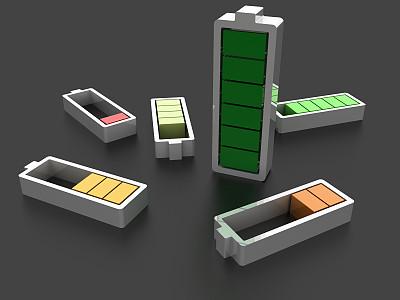Lithium-ion Batteries Overcharge Protection
Sep 18, 2019 Pageview:947
Lithium batteries are far the best batteries in the world. The chemistry is slowly taking over the world as demand for battery energy continues to grow. This is because they have higher energy density and can carry a lot of energy even in a small volume.
However, there is one negative side to the tech that every user must be aware of. When bad things happen, the battery can easily go up in flames. There have been many stories about homes burning to the ground because someone did not consider checking the batteries.
One of the bad things that can happen is overcharging. This is when the battery takes in too much charge that it is required to. This happens because of a thermal runaway in a lithium battery.
The best lithium battery has a nominal voltage of 3.V and charges a voltage of 4.5V. Therefore, if you crank this charge up, you are in for a surprise. The good thing is, most lithium batteries contain circuits aimed at preventing this.
Battery manufacturers mention the charging rate. At optimum, it does not have to go beyond 8/10 of the rated current.
When charging a Li-ion pack, expect a total temperature rise of about 9 degrees F. And this means the battery is not safe.
What happens during overcharge?
Lithium batteries lack what is called trickle charge when they reach full capacity. This is the opposite of many other battery chemistries. If this were to happen, it could cause plating of the metallic lithium inside the battery.
With metallic plating, high charge current puts pressure on the lithium ions causing them to accumulate at the anode surface. They will not, however, be absorbed into the anode itself. With time, the lithium, which is plated-out, can cause the internal battery components to short-circuit.
The hottest point of such a battery is usually at the anode. But that is not the only point that gets affected. Prolonged overcharging causes the cathode material to become unstable. This causes the pressure to keep rising, and if it goes high enough to about 500psi, the casing may pop, and that can cause a fire.
Advantages of lithium-ion battery overcharge protection
The last thing you want is the process described above to happen. As a user, it is important to do everything you can to ensure you use your batteries safely. And that means considering methods for overcharge protection.
As battery technology advances so do ways of protecting users. Battery overcharge protection systems have taken center stage in providing optimum safety. They are applicable in rechargeable Li-Ion batteries for hybrid cars and consumer electronics. Here are some advantages:
· Prevents overheating. As described above, overheating is one major cause of Lithium-ion batteries bursting into flames. Battery explosion may have become far too common today because of this. Bursting batteries can be a huge disaster. There has been news about aircraft crushing because of such items. Overcharge protection can be a great solution for this.
· Complete overcharge/ discharge protection. Li-ion battery cells are designed to handle a specific minimum or maximum charge. An overcharge is as bad to the cells as a discharge. In both cases, the cells can be affected beyond repair, forcing you to but new batteries all the time.
Li-ion batteries have a charge cycle of 150-250. If you let it overcharge, this cycle can be reduced. That means, your battery will stop giving you great performance within a short time.
· Longer life cycle and battery life. Li-ion batteries are very powerful. They have higher capacity and better design for any gadget. And that means they are very expensive. You want to ensure you get the value of your money. And that means ensuring your battery is protected against overcharge.
· Automatic cell balancing for maximum efficiency. Despite being quite powerful, Li-ion batteries can frustrate you. Their performance degrades when the cells get affected. But with overcharge protection, you can get improved performance.
· The lower cost that electronic control. Many people consider buying electric control. But that is not always an option is you consider the cost. Overcharge protection is much cheaper, yet offers the same effect.
· Improved power density. How long does your device run in the battery in a day? When new, most of these batteries take more than a day, letting you enjoy your device. But as time goes by, you will notice its capacity reducing. The biggest contributor to this is overcharging. It is better to invest once in a protection system and avoid all that.
How to judge if your battery has lithium-ion battery overcharge protection
There are many different manufacturers for Li-ion batteries. Each manufacturer uses different ways to make their products seem better.
But knowing circuitry is not easy. It would not be easy because you will have to do extreme tests to find out. You have to consider the highest voltage, lowest voltage, max current, temperature, and many other things. You might even end up destroying your battery.
There are a few easy ways to test for circuitry.
One, you start by draining the battery to test for under-voltage protection. If it has the protection, the output will shut down suddenly, giving you zero at 2.5V. If there is not battery protection, it will continue draining to around 2.0V. In that case, lithium plating becomes useless. Use the same procedure for overcharging.
How does lithium-ion battery overcharge protection system work?
Overcharge is described as the excess capacity delivered during battery recharge. Overcharge is not always bad as it can be sued to prevent sulphation in certain situations.
But in the situation where it becomes dangerous, a battery overcharge system comes in. It is a technology used to ensure your battery cells don’t take in excess Ah.
In a nut-shell, the system works by shutting down voltage intake once the cells achieve a maximum of 4.2V. In a normal PV system, 1 -4% excess charge is common, and 10% for non-PV systems.
Final thought
Standard Li-ion batteries have an overcharge allowance. Anything beyond this will make your battery useless. We hope this article has helped tip you on handling overcharge.
- Prev Article: Lithium battery storage temperature-chemical storage
- Next Article: Nickel Cadmium vs Lithium Batteries-Composition, Chemistry...
Leave Message
Hottest Categories
-
Hottest Industry News
-
Latest Industry News











